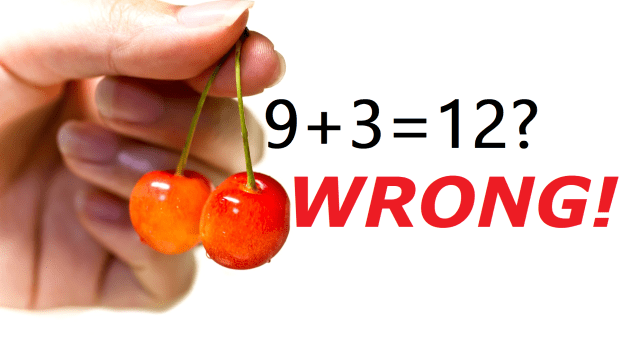
Stupidly rigid rules dangle down to infuriate older brother.
Between the emphasis Japanese society puts on formal education and the competitive admissions systems which often require students to take grueling entrance exams, there’s an intense pressure on kids in Japan to arrive at the right answers in their classwork. Things get even worse, though, when you add in the baffling requirements some schools have regarding how pupils arrive at them.
Japanese Twitter user @yomos1354 has a younger, elementary school-age brother, who recently brought home his graded math test. In one section, he managed to get all 10 questions wrong, which would ordinarily be pretty troubling, since they were all simple addition problems involving pairs of single-digit numbers.
But then @yomos1354 took a closer look, and realized that it’s not his brother who’s dumb, but his school.
Among his brother’s responses that were marked wrong were “9+3=12” and “7+4=11.” Now, it’s true that mathematics-related linguistics often work differently in Japanese and English, but the actual phenomena of addition is universal, so what was the problem?
If you look at the first question on the test, you’ll see a note, written in red, from the boy’s teacher, which reads “sakuranbo keisan,” or “cherry calculation.” Cherry calculation is a method taught in some schools that gets its name from the annotations kids are supposed to make on their paper, which resemble a pair of dangling cherries.
For example, let’s take a look at how the cherry calculation would go for adding 7 and 4.
To start, the student is supposed to look at the first number in the problem and ask how much needs to be added to it to get to 10. In this case, we need another 3 to get from 7 to 10, so the next step is for the student to break off 3 from the second number in the problem and write it below.
Then the student subtracts 3 from 4 and writes the difference next to the 3.
Now having filled in both “cherries,” the student completes the calculation by acknowledging that the first number from the original problem plus the first cherry equals 10, and then using the number in the second cherry for the value of the ones-digit, giving the final answer of 11.
In all fairness, it should be recognized that the cherry calculation works. Performed properly, it produces the correct answer. However, there’s no getting around the fact that it replaces a single computation with four, and also requires the problem-solver to mix two types of computations, subtraction and addition.
▼ Standard computation
▼ Cherry computation
More than one online commenter asked if perhaps the class had been instructed to show their work using the cherry calculation method, but @yomos1354 says there’s no such directions written on the test, nor were the students verbally told to do so.
Of course, no one would have gone to the trouble to develop and teach the cherry calculation method if it didn’t have any possible benefits. Proponents say it can be an effective way to help young learners get over mental hurdles about how exactly arithmetic works. If a kid is completely stumped as to how to go about solving the question “7+4=?”, the cherry calculation is a method by which a teacher can give a helping hand without just solving the problem for him. “OK, how many more do we need to add to seven to get to 10?” the teacher might ask. Once the student has taken that step, the next questions would be “And if we take three away from four?” and “And what’s 10 plus 1?” This breaks the question into smaller chunks that might be easier for a child’s mind to grasp if he’s having trouble understanding the concept of how the ones-digit wraps back around to zero each time the tens-digit goes up an integer.
But all that just makes @yomos1354 even more frustrated about how his brother’s test was graded. The cherry calculation is supposed to provide assistance for those students who can’t do the calculations in their head or all in one simple step. His brother is already clearly proficient enough to not need to rely on drawing little cherries under the problems. “Not even funny how he got marked down,” @yomos1354 tweeted. “The school has no business forcing everyone to use the [cherry calculation] method for problems that are this simple,” understandably upset at how forcing his brother to use an educational crutch he doesn’t require would be hobbling him intellectually.
It’s another frustrating example of how students can sometimes get penalized for being ahead of the game in Japan, so hopefully next year @yomos1354’s little bro will be lucky enough to end up in a class taught by one of Japan’s awesomely flexible teachers instead.
Sources: Twitter/@yomos1354 via Jin, Shogakko Nyugaku Joshi no Mama Nikki, Print Kids
Top image: Pakutaso (edited by SoraNews24)
Insert images: SoraNews24
Follow Casey on Twitter, where he wrote this whole article with Ai Otsuka’s “Sakuranbo” stuck in his head.